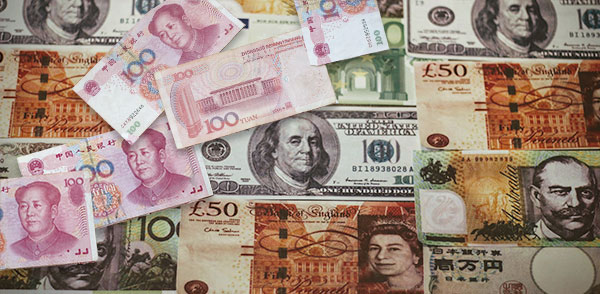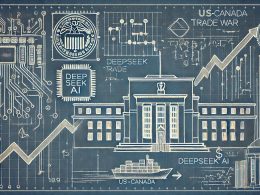by Hubert Marleau, Market Economist, Palos Management
The S&P 500 dipped 0.7% to 3558 this week even though it registered an all-time high on Monday (3627). The Covid-19 vaccine optimism was interrupted by the harsh reality that case numbers and death tolls are surging with no sign of more fiscal assistance plus a rare show of discord between Mnuchin and Powell over unspent stimulus money .
The Powell-Mnuchin Spat
The Treasury Department refused to continue the now-expired Federal Reserve credit facility which was instrumental in inspiring investor confidence in the Fed’s backstop program. Over the course of the year, Investment-Grade and High-Yield bond issuance volumes have exceeded pre-pandemic levels and credit spreads have fallen almost back to their pre-crisis values. Consequently, the White House used this economic rationale to get its money back. The Fed was not happy with the surprise decision which brought intense public scrutiny. The open spat between the Fed and the Treasury is a bad sign that casts a shadow on market confidence. It's curious why the support programs were cut at this time--perhaps it’s politics? Many observers including the US Chamber of Commerce were not amused. For the first three weeks in January, the markets will be operating without any Fed guarantee for the first time since last spring. Investors would have preferred to let the credit market function with training wheels until the current Covid-19 crisis is completely over.
The Stock Market For the Next Two Months: Flat
Promising vaccine developments versus rapidly increasing coronavirus cases will have implications for the economy and consequently on the market for the next two months. These two forces are both catastrophic and spectacular. They are likely to remain in the forefront of investors’ minds. Grasping two contrarian thoughts at once is a tall order. On the one hand, we have never been closer to defeating the virus because there is scientific certainty that the end of the pandemic is in sight. Meanwhile, society's most agonizing days lie ahead because many will become infected and possibly die. In other words, we are nearing the end but the final surge could be deadly.
As an investor what should I do? Whatever I do, it is just as likely to cause me trouble as benefit. It's a tug of war. Thus, until the White House changes hands, the S&P 500 will probably waver near the current break-even line which technically ranges between 3650 and 3475. For now the market is in a quandary--a state of perplexity that resembles what economists call an economic dilemma. Joren Blokland of Robeco came up with the idea that the new Covid-19 outbreak is confronting policymakers with a trilemma. Finding an acceptable trade-off in a politically divided country between public health, the economy and personal freedom is near impossible. The situation will force a trade off, meaning that one of the aforementioned items will have to go or take a minor rank.
Blokland may have got the idea from what economists call the existence of “uneasy triangles” or the “impossible trinity”. For example, the Mundell-Fleming model shows that it is impossible to have a fixed exchange rate, an independent monetary policy and capital mobility, simultaneously. There is also the Rodnik Model which stipulates that democracy, national sovereignty and deep globalization are mutually incompatible.
Although the short term may be unappealing for stock prices, I would stay put, keep the faith and trust in the recovery. Why? The economy is still moving ahead and the mid-term outlook looks good. Thus any sort of market pullback caused by bad news should be immediately absorbed with sideline cash.
The Economy: Still Moving Forward
Interestingly, there were little changes in the market for bonds, gold and currencies. But we did get a nice run-up in commodity prices, including industrials, oil and copper, suggesting that the direction of the economy continues to be positive. While the labour market is flashing signs of slowing down as exemplified by higher weekly job claims and lower daily job postings than expected, these labour sensitive data points were overshadowed by a series of powerful economic prints. The Conference Board reported that the leading economic indicators increased by 0.7% in October, following an uptick of 0.7% in September and a healthy 1.6% gain in August. Taken together, this trio of issuances, which are consistent with recent reports of rising industrial production, firmness in the housing sector, an escalation of new entrepreneurs setting up new businesses and satisfactory nominal increases in retail sales, point to further expansion in economic activity in Q/4. The Atlanta Fed’s GDPNow model estimate for real growth in Q/4 is 5.6%. According to BofA’s Michael Harnett, “consensus is coalescing around 2021 being the year of “vaccine not virus”, “reopening not lockdown”, and “recovery not recession”, set against a macro backdrop of 5.2% global growth, 3.8% UDS GDP growth, 1.9% US inflation, and 1.2% on the US 10-year.”
The 2021 Stock Market Outlook
Morgan Stanley joined JPMorgan and Goldman Sachs in painting a positive outlook for equities. It should be noted that they have different reasons for their bullish 2021 scenario. JPMorgan strategist Marko Kolanovic said U.S. election results create a bull case for markets, while David Kostin at Goldman Sachs expects society to normalize gradually next year. Not to be upended, the Morgan Stanley team under the direction of Andrew Sheets suggested that the global recovery is sustainable, synchronous and supported by policies, following much of the normal post-recession playbook.
The highlights of the Morgan Stanley’s investment calls were:
- A base case for the S&P 500 to reach 3900 by the end of 2021.
- A 10-year Treasury yield at 1.45% by the end of next year.
- The U.S. Dollar Index to weaken about 4% by the end of 2021
- A preference for high-yield credit over investment grade and leveraged loans over high-yield bonds.
- Gold should on average trade around $1825 for 2021.
P.S. Next week I shall give you my reasons why the broadly bleeding dollar, the global demographic shifts, the scars of the pandemic and the world-wide liquidity boom will lead to a reflation scenario down the road that could profoundly alter social behaviour, reorganize fixed capital, change working habits, destroy obsolete property, rearrange our spending habits and change the health care system, etc.
Copyright © Palos Management














